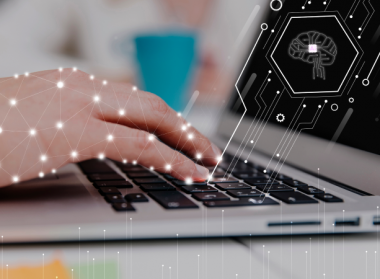With the rise of a global business community that’s always on and always connected, companies looking to gain or maintain a competitive edge have shifted their focus to value—and in doing so, transformed procurement from a savings-oriented necessity to a value-focused strategic tool. This transformation is particularly apparent in the procure-to-pay process (P2P), where rich opportunities for optimization, process improvement, and strategic decision making hold the potential to help a business break through to new levels of success.
Of course, in order to take advantage of this potential, it’s necessary to recognize, understand, and utilize the right tools. Regardless of industry or company size, succeeding in a twenty-first century marketplace defined by digital disruption requires a willingness to embrace new and exciting technologies, including procure-to-pay software solutions.
Five Essential Procure-to-Pay Solutions
While the term “automate” often conjures images of robots replacing human labor, automating procurement with artificial intelligence doesn’t require any help from Optimus Prime. Instead, by addressing five key areas of the procurement process and bringing together workflows from both procurement and accounts payable, P2P solutions help ensure maximum return on investment (ROI) for every dollar spent and substantial savings through process optimization.
Ideally, your procure-to-pay software solutions will include:
Purchase Requisition Software:
Introducing automation and cloud-based document management, purchase requisition software makes it easy for your organization to:
- Generate and auto-populate purchase requisitions using information from a centralized vendor database and item catalogs, while still allowing for the manual creation of single requisitions for new items or one-off purchases.
- Use automation to simplify and streamline approval workflows with contingencies and built-in reminders.
- Removal of manual processes and human error from requisitioning workflows, freeing staff to focus on more important tasks than data entry and correcting mistakes.
- Track the status of a purchase requisition anywhere in the system.
- Prevent maverick spend by limiting purchasing access and roles based on position, purchase size, and item type.
Purchase Order Software:
Like purchase requisition software, purchase order (PO) software provides real-time tracking and complete transaction visibility throughout the creation and approval workflows across the procure-to-pay cycle.
Cloud-based, automated purchase order software lets businesses:
- Track the status of all POs at all times, from the office and from mobile devices.
- Keep track of all orders placed with specific vendors, as well as associated pricing and delivery information.
- Minimize roadblocks in the approval process with reminders and contingency workflows.
- Improve inventory management by filling orders internally from existing inventory where possible.
- Connect purchase orders with other key documents such as invoices and shipping documents to simplify three-way matching.
Supplier Management:
Without adequate management tools, supply chains are prone to bloat, maverick spend, fraud, and costly miscommunications and errors that lead to even costlier delays and loss of goodwill. Because supplier relationships are so important to a business’ reputation and negotiating position, and the reliability and performance of trusted vendors is so critical to production, supplier management software is a key part of any truly effective purchase-to-pay solution.
Supplier management software benefits procurement teams in a number of ways, including:
- Strong and secure document and data management to ensure both vendor and customer confidentiality are protected.
- Simplified onboarding of suppliers through vendor portals.
- Ongoing performance tracking and analysis of vendor performance and contract compliance to identify your most valuable suppliers—and those who may need to be rehabilitated or removed from your supply chain altogether.
- More strategic sourcing and decision-making based on accurate and complete vendor performance data.
- Integration of supplier activities with your procurement system for additional time and money savings, including electronic invoicing.
Invoice Management:
When it’s time to pay the piper, effective invoice management software can speed the process while improving both accuracy and completeness of transactional data by adding AP automation to the mix.
With invoice management software, your company can:
- Receive electronic invoices (eInvoicing) from vendors and route them through the system without the need for conversion from a physical copy.
- Automatically perform a three-way check of invoice data against the related purchase order and shipping documents to verify accuracy and completeness.
- Detect and flag exceptions for further review, with automatic notifications sent to all key stakeholders.
- Automatically calculate and include any items such as tax, shipping, and other incidental costs not listed in the original purchase order.
- Streamline approval workflows for faster invoice processing and payment to capture early-payment discounts (and avoid late-payment fees and loss of goodwill).
Contract Management:
One of the most promising aspects of automated P2P software suites is centralized data management. Not only does it allow for the development and use of vendor databases and item catalogs, but it greatly enhances contract management as well.
Using contract management software, it’s easy to:
- Access all essential information, including legal boilerplate and standard terms and conditions required by industry and legal regulations, when building a new contract or modifying an existing one.
- Use templates to create contracts quickly and accurately.
- Potentially connect contract data to purchasing workflows to provide real-time terms, pricing, and compliance information for a specific supplier or particular goods and services.
- Collaborate and negotiate more effectively thanks to immediate access to not just transaction data, but vendor performance data, market research, and other information that can strengthen your bargaining position or provide insight into potential opportunities for additional contracts with trusted vendors.
While they each offer distinct enhancements to the procure-to-pay process, the risk that comes with individual P2P software packages is a lack of cohesion that could very well negate some of the gains. Choosing a complete procurement solution designed to share common resources improves transparency and eliminates potential integration headaches.
The Value of a Comprehensive Procurement Software Solution
While they each offer distinct enhancements to the P2P process, the risk that comes with individual P2P software packages is a lack of cohesion that could very well negate some of the gains made through process improvement—even if they can be integrated with one another. Choosing a complete eProcurement solution designed to share common resources improves transparency and eliminates potential integration headaches.
The primary issue with separate packages is an overabundance of discrete, disconnected data sources. If, for example, your contract management software makes creating contracts a snap, but can’t connect to your purchase order software, both procurement and accounts payable may lose valuable time and money manually entering and verifying data or working with IT to create a work-around. Similarly, isolated invoicing and PO software won’t necessarily have an easy way to perform three-way matching without some additional work.
Modern software solutions like PLANERGY offer a complete procure-to-pay suite as part of a total procurement optimization package. All applications work from the same centralized data storage and management server. All users need only a single sign-on for leveled access to the content they need for purchasing, approvals, reviews, planning, and financial reporting. This improves both user experience and the purchasing process as a whole.
Consider this scenario:
Bob Jones needs to order widgets. He signs into the procurement software, and is presented with a master catalog. He searches for widgets. The query is routed to the vendor database and item catalog, and returns a single result for widgets, offered by Company X. Bob’s company already has a standing contract with Company X, with the best possible pricing and terms, and trusts Company X to meet its business needs based on Company X’s strong performance and compliance history. Bob adds the widgets to his cart and “checks out.” It’s quite similar to the shopping experience he’d have if buying something online at home.
The purchase request is well below Bob’s approved spending limit and complies with budget parameters, so it’s automatically routed to procurement, where a PO is issued and sent to Company X electronically. Bob, who is monitoring his order in real time, receives a notification from the system that Company X has received the order and will be shipping his widgets the next day.
Bob receives his widgets the following day. The receiving documents are automatically recorded and compared with the purchase order for accuracy and completeness. The information matches, so receiving delivers Bob’s widgets to him.
Meanwhile, in accounts payable, an electronic invoice is received for Bob’s order. A quick glance confirms that the invoice matches the original PO and receiving documents, so payment is approved and automatically scheduled based on payment terms included in the PO from the contract management database. Bob’s company pays for the order early, receiving a modest discount, and the accounting system—which has been integrated with the procurement package—records the transaction in the general ledger. Bob’s transaction is also noted in the Enterprise Resource Planning system (ERP system) that is similarly integrated with the procurement solution.
Bob’s transaction is just one of dozens, or even hundreds, handled by the automated system in any given week. It forms part of the spend data matrix that will be used by the procurement, marketing, and finance departments (among others) for everything from financial reporting to audit trails to spend analysis, forecasting, and strategic planning.
Because Bob’s company chose a comprehensive procurement solution like PLANERGY, Bob’s widgets, and every other purchase made by the company, is easier, more efficient, and provides useful data that can be used to further refine internal process efficiency, spend management, and compliance.
The end result: less wasted time, greater efficiency, and greater profitability and flexibility for Bob’s company.
Optimize, Integrate, and Thrive
Like all business processes, the procure-to-pay process is only as cost-effective and efficient as the company’s commitment to optimization will allow. By investing in a comprehensive procure-to-pay package supported by artificial intelligence, automation, and cloud-based data management, your company can realize the potential hiding within its procurement function for greater savings, higher productivity, and a strong competitive position.




